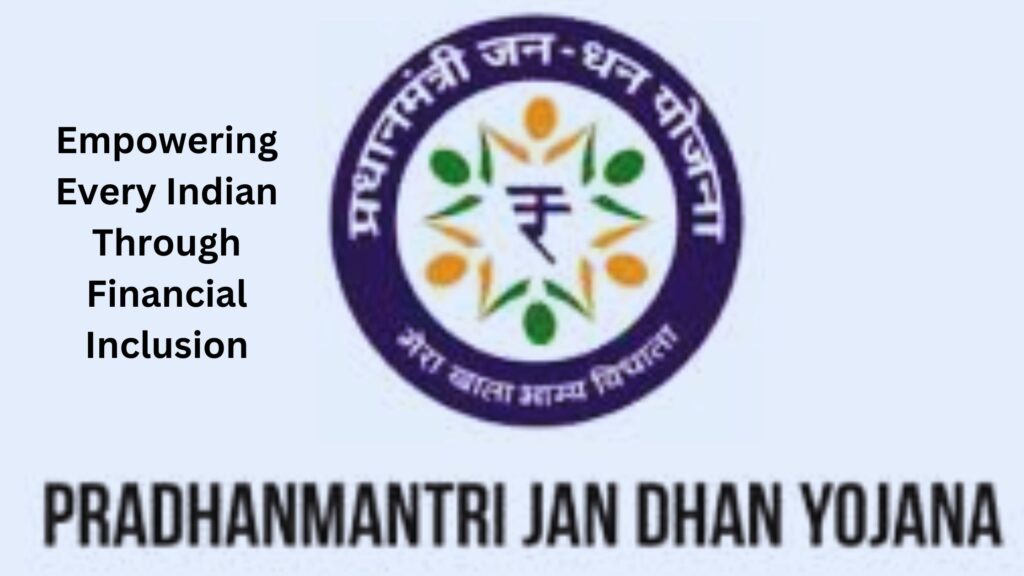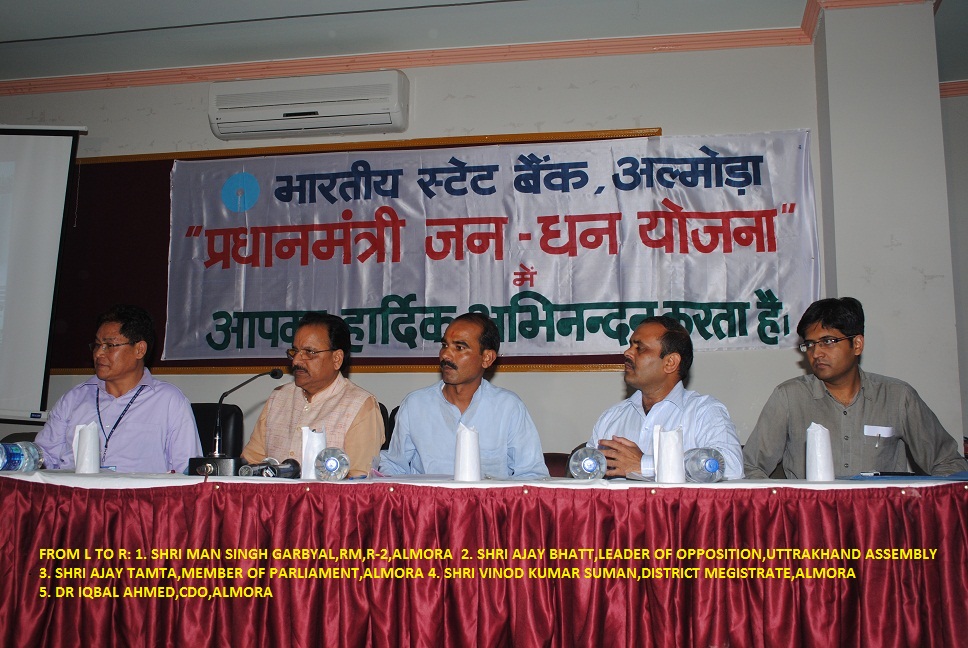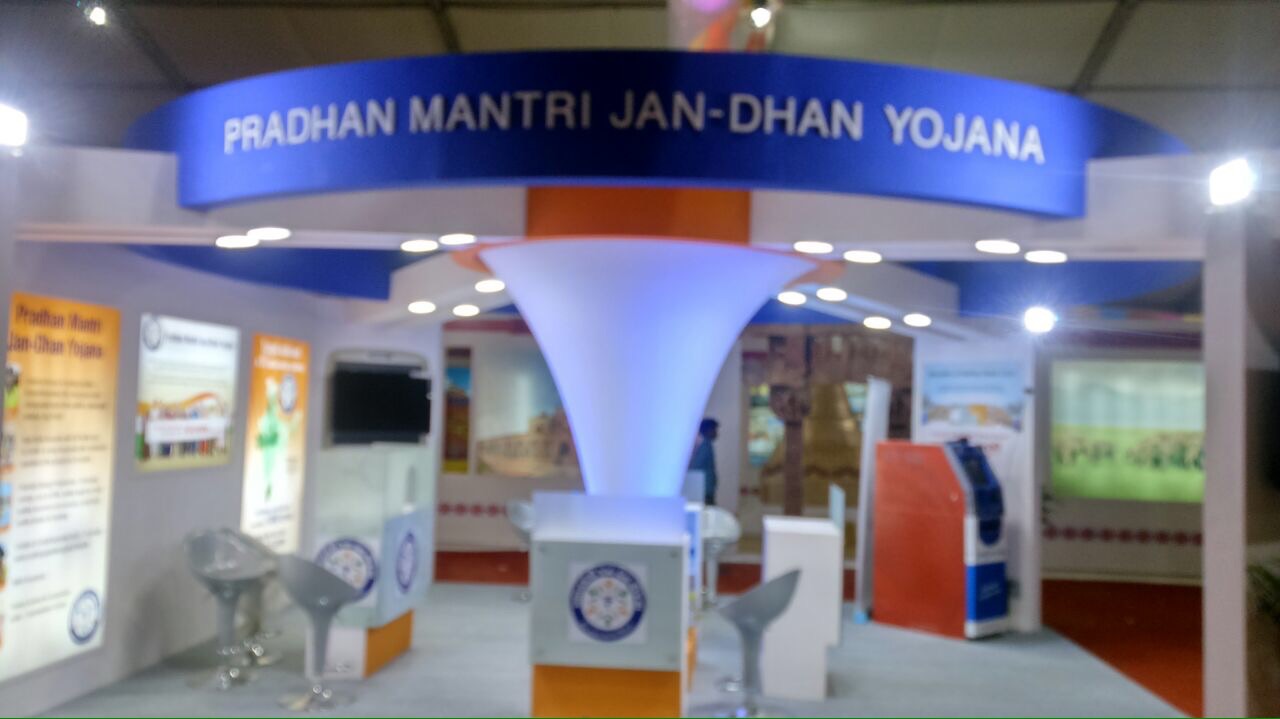
Launched in 2014, Pradhan Mantri Jan Dhan Yojana (PMJDY) is a financial inclusion scheme in India providing access to bank accounts, remittance, credit, insurance, and pensions.
Empowering citizens through financial inclusion is a cornerstone of India’s economic development strategy. Launched in August 2014 by Prime Minister Narendra Modi, the Pradhan Mantri Jan Dhan Yojana (PMJDY) is the world’s largest financial inclusion scheme, making significant strides towards bringing banking services to every doorstep in India.
Objective of “Pradhan Mantri Jan-Dhan Yojana (PMJDY)” is ensuring access to various financial services like availability of basic savings bank account, access to need based credit, remittances facility, insurance and pension to the excluded sections i.e. weaker sections & low income groups. This deep penetration at affordable cost is possible only with effective use of technology.
PMJDY is a National Mission on Financial Inclusion encompassing an integrated approach to bring about comprehensive financial inclusion of all the households in the country. The plan envisages universal access to banking facilities with at least one basic banking account for every household, financial literacy, access to credit, insurance and pension facility. In addition, the beneficiaries would get RuPay Debit card having inbuilt accident insurance cover of र 1 lakh.
The plan also envisages channeling all Government benefits (from Centre / State / Local Body) to the beneficiaries accounts and pushing the Direct Benefits Transfer (DBT) scheme of the Union Government. The technological issues like poor connectivity, on-line transactions will be addressed. Mobile transactions through telecom operators and their established centres as Cash Out Points are also planned to be used for Financial Inclusion under the Scheme. Also an effort is being made to reach out to the youth of this country to participate in this Mission Mode Programme.
What is Pradhan Mantri Jan Dhan Yojana (PMJDY)?
PMJDY is a national mission for financial inclusion aimed at ensuring access to a comprehensive suite of financial services for every Indian household. This includes:
- Basic Savings Bank Deposit Accounts: Zero-balance accounts that allow users to deposit and withdraw money, receive government benefits electronically, and avail of other banking facilities.
- Access to Need-Based Credit: PMJDY facilitates access to loans tailored to individual needs, empowering users to invest in their businesses or meet personal emergencies.
- Remittance Facility: The scheme enables users to send and receive money conveniently and securely within India.
- Insurance and Pension Products: PMJDY account holders can access accident insurance, life insurance, and pension products, ensuring financial security for themselves and their families.
How Does PMJDY Work?
The scheme works by:
- Enabling the opening of basic savings bank accounts for unbanked persons at zero balance in any bank branch or Business Correspondent (Bank Mitra) outlet.
- Providing a RuPay debit card with inbuilt accident insurance cover of ₹2 lakh to new account holders. Accounts opened between August 2014 and January 2015 also get a life insurance cover of ₹30,000.
- Offering an overdraft facility of up to ₹10,000 after 6 months of satisfactory operation of the account. No conditions are attached for OD up to ₹2,000.
- Conducting financial literacy programs to educate account holders.
- Enabling Direct Benefit Transfers (DBT) of government subsidies and welfare payments into PMJDY accounts.
As of August 2023, over 50 crore PMJDY accounts have been opened, with 55.5% belonging to women and 67% in rural/semi-urban areas. Total deposits in these accounts exceed ₹2 lakh crore. The scheme has revolutionized financial inclusion in India by bringing the unbanked into the formal banking system and facilitating direct benefit transfers
Key Features
- Universal Access: PMJDY caters to both urban and rural populations, ensuring financial inclusion reaches every corner of the country.
- Zero-Balance Accounts: Accounts can be opened with no initial deposit, making them accessible to even the most underprivileged sections of society.
- RuPay Debit Cards: Each account comes with a RuPay debit card, enabling users to make cashless transactions at ATMs and Point-of-Sale (PoS) terminals.
- Overdraft Facility: Eligible account holders can avail of an overdraft facility, providing them with access to additional credit in times of need.
- Financial Literacy Programs: The scheme promotes financial literacy initiatives to educate users on managing their finances effectively.
- Business Correspondents (BCs): In areas with limited bank branch presence, BCs, also known as Bank Mitrs, act as representatives, providing basic banking services at convenient locations.
Benefits
- Financial Security: Easy access to bank accounts promotes saving habits and fosters financial security for individuals and families.
- Direct Benefit Transfers: Government benefits are electronically transferred to PMJDY accounts, ensuring transparency and eliminating leakages.
- Credit Availability: The scheme facilitates access to formal credit, enabling individuals to break free from the clutches of moneylenders and invest in income-generating activities.
- Empowerment of Women: PMJDY empowers women by providing them with control over their finances, fostering greater financial independence.
- Boost to Financial Inclusion: The scheme has significantly increased financial inclusion in India, bringing millions into the formal financial fold.
Eligibility criteria

The eligibility criteria for opening a Pradhan Mantri Jan Dhan Yojana (PMJDY) account are as follows based on the provided sources:
- Citizenship: All Indian nationals are eligible to apply for the Jan Dhan Yojana scheme.
- Age: Individuals should be at least 10 years of age to be eligible for the scheme.
- Bank Account: Applicants should not already have a bank account to qualify for PMJDY.
- Identity Proof: Any form of identity proof that is duly authorized by gazette officers is acceptable to open a Jan Dhan Yojana account. In the absence of documentation, banks are required to conduct thorough background checks.
- Life Insurance Eligibility: To be eligible for life insurance coverage under PMJDY, individuals must be between 18 to 59 years of age, have opened a bank account for the first time between 15th August 2014 and 31st January 2015, have a bio-metric linked bank account, and hold a RuPay card. Certain exclusions apply, such as being a State or Central Government employee, having a taxable income, or having life insurance from another scheme.
- Personal Accident Insurance Eligibility: To be eligible for personal accident insurance cover, individuals must have a RuPay card with at least one successful financial or non-financial transaction within 90 days before the date of the accident
Required documents
To open a Pradhan Mantri Jan Dhan Yojana (PMJDY) account, individuals need to provide specific documents for the Know Your Customer (KYC) process. Here are the documents required based on the provided sources:
- Passport
- Driving licence
- PAN card
- Aadhaar card
- Voter’s identity card
- Job card issued by NREGA signed by an officer of the State Government
- ID card with a photograph issued by Central/State Government departments, Statutory/Regulatory Authorities, Public Sector Undertakings, scheduled commercial banks, and public financial institutions
- A letter with a duly attested photograph of the person issued by a Gazetted officer
If individuals do not have any valid documents, they can still open a ‘Small Account’ by submitting a self-attested photo and signing or giving a thumbprint in the presence of a bank official.
These documents are essential for fulfilling the KYC requirements and opening a Pradhan Mantri Jan Dhan Yojana account to access the benefits and services provided under this financial inclusion scheme.
Impact of PMJDY

PMJDY has been a resounding success, with over 48 crore (480 million) bank accounts opened under the scheme as of March 2024 [Source: PMJDY website]. This remarkable achievement has been recognized by the Guinness World Records for the most bank accounts opened in a week.
Beyond the Numbers
The impact of PMJDY transcends mere numbers. The scheme has:
- Promoted Financial Literacy: Financial literacy initiatives undertaken as part of PMJDY have empowered users to make informed financial decisions.
- Facilitated Direct Benefit Transfers: Electronic transfer of government benefits has ensured timely and targeted delivery of assistance to beneficiaries.
- Boosted Cashless Transactions: The issuance of RuPay debit cards has promoted cashless transactions, contributing to a more digital economy.
- Reduced Dependence on Informal Money Lenders: Access to formal credit through PMJDY has helped many individuals break free from the exploitative cycle of debt incurred from informal lenders.
Looking Ahead
The Government of India remains committed to further strengthening PMJDY. Efforts are ongoing to:
- Promote Digital Transactions: Encourage wider adoption of digital payment methods linked to PMJDY accounts.
- Expand Financial Literacy: Continue financial literacy initiatives to empower users with financial management skills.
- Enhance Insurance and Pension Products: Offer a wider range of insurance and pension products tailored to the needs of PMJDY account holders.
how has Pradhan Mantri Jan Dhan Yojana impacted financial inclusion in India
The Pradhan Mantri Jan Dhan Yojana (PMJDY) has significantly impacted financial inclusion in India since its launch in 2014. Here are some key ways it has contributed to increasing access to banking services and promoting inclusive growth:
Increased Accounts and Deposits
- The number of PMJDY accounts has grown over 3-fold from 14.72 crore in March 2015 to 50.09 crore as of August 2023. This indicates a massive expansion of the formal banking system.
- Total deposits in PMJDY accounts have swelled from ₹15,670 crore in March 2015 to over ₹2.03 lakh crore as of August 2023. The average deposit per account has increased 3.8 times from ₹1,065 to ₹4,063 during this period.
Reaching the Unbanked
- 55.5% of PMJDY accounts have been opened by women, and 67% are in rural/semi-urban areas, indicating the scheme has been successful in reaching the traditionally underserved segments.
- The percentage of zero-balance accounts has reduced from 58% in March 2015 to 8% as of August 2023, showing increased usage and engagement with the banking system.
Enabling Direct Benefit Transfers
- PMJDY accounts have become the fulcrum for people-centric initiatives like Direct Benefit Transfer (DBT) of government subsidies and welfare payments. This has helped plug leakages and ensure benefits reach the intended beneficiaries.
Challenges Remain
- However, a district-level analysis shows a majority of Indian districts still have low financial inclusion. Connectivity issues, technological challenges, and lack of awareness persist as barriers.
- Merely opening accounts is not enough – ensuring active usage and providing access to other financial services like credit, insurance and pensions is crucial for achieving meaningful financial inclusion
how to open a pradhan mantri jan dhan yojana account
To open a Pradhan Mantri Jan Dhan Yojana (PMJDY) account, one can follow these steps based on the information from the provided sources:
- Visit a Bank Branch or BC Point: PMJDY accounts can be opened at a Bank of Baroda branch or Business Correspondent (Bank Mitra) outlet.
- Provide Necessary Documents: For hassle-free account opening, individuals without valid government documents can open a “small savings account”.
- Zero Balance Requirement: There is no requirement to maintain any minimum balance in PMJDY accounts.
- Avail Benefits: Upon opening a PMJDY account, individuals can enjoy benefits like insurance coverage up to Rs. 1 lakh, an overdraft facility of up to Rs. 5,000 after 6 months of active usage, and a RuPay debit card with inbuilt accident insurance cover.
- Access Additional Services: PMJDY accounts offer convenient banking with online banking, mobile banking, and access to call center and toll-free numbers for assistance.
- Financial Literacy Programs: The scheme also provides financial literacy programs to enhance understanding of banking services and benefits.
- Direct Benefit Transfers: PMJDY accounts serve as a platform for Direct Benefit Transfers (DBT) of government subsidies and welfare payments.
- Structured Monitoring: The PMJDY has a structured monitoring mechanism from the central to district level to ensure effective implementation and oversight.
By following these steps and visiting a Bank of Baroda branch or BC Point, individuals can open a PMJDY account and access the benefits and services provided under this financial
FAQ’s
Is there a fee to open a PMJDY account?
No, opening a PMJDY account is free. However, some banks may levy a minimal charge for certain transactions associated with the account.
Is it mandatory to maintain a minimum balance in a PMJDY account?
No, PMJDY accounts are zero-balance accounts. However, maintaining a minimum balance may entitle you to certain benefits offered by the bank.
How can I activate my RuPay debit card?
You can typically activate your RuPay debit card at the bank branch or BC outlet where you opened your account.
How can I check my PMJDY account balance?
You can check your account balance through various methods, including mobile banking (if enabled for your account), ATM withdrawals, or by visiting your bank branch/BC.
Conclusion
The Pradhan Mantri Jan Dhan Yojana is a remarkable initiative that has redefined financial inclusion in India. By empowering citizens with access to essential financial services, PMJDY is paving the way for a more prosperous and inclusive future for the nation.

